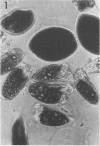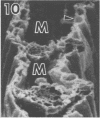Abstract
The association with and digestion of intact leaf sections of cool- and warm-season grasses by cattle rumen protozoa were investigated by light and scanning electron microscopy and by in vitro dry matter disappearance studies. Within extensively degraded areas of mesophyll tissue in cool-season forages, almost all protozoa were Epidinium ecaudatum form caudatum, with maximum numbers at 4 to 10 h of incubation. However, few protozoa were found inside warm-season forage leaves. In in vitro dry matter disappearance studies of a series of incubations with and without 1.6 mg of streptomycin per ml, which inhibited the cellulolytic activity of the bacteria, and in comparison with uninoculated controls, rumen protozoa degraded 11.0 and 3.7 percentage units of orchardgrass and bermuda-grass, respectively. Scanning electron microscopy showed that the tissues degraded in orchardgrass consisted of large amounts of mesophyll and portions of the parenchyma bundle sheath and epidermis; no tissue loss due to the protozoa was observed in bermudagrass. The relationship of these observations to forage digestion is discussed.
Full text
PDF
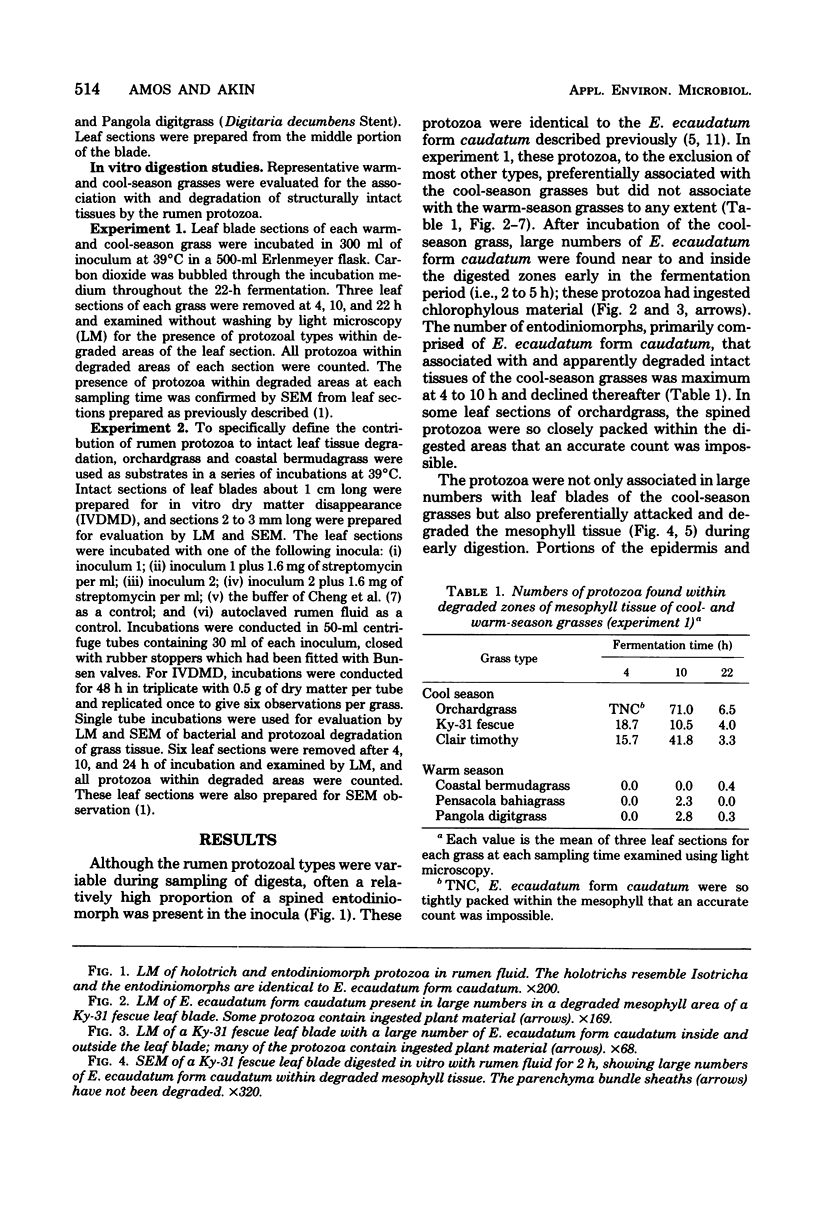
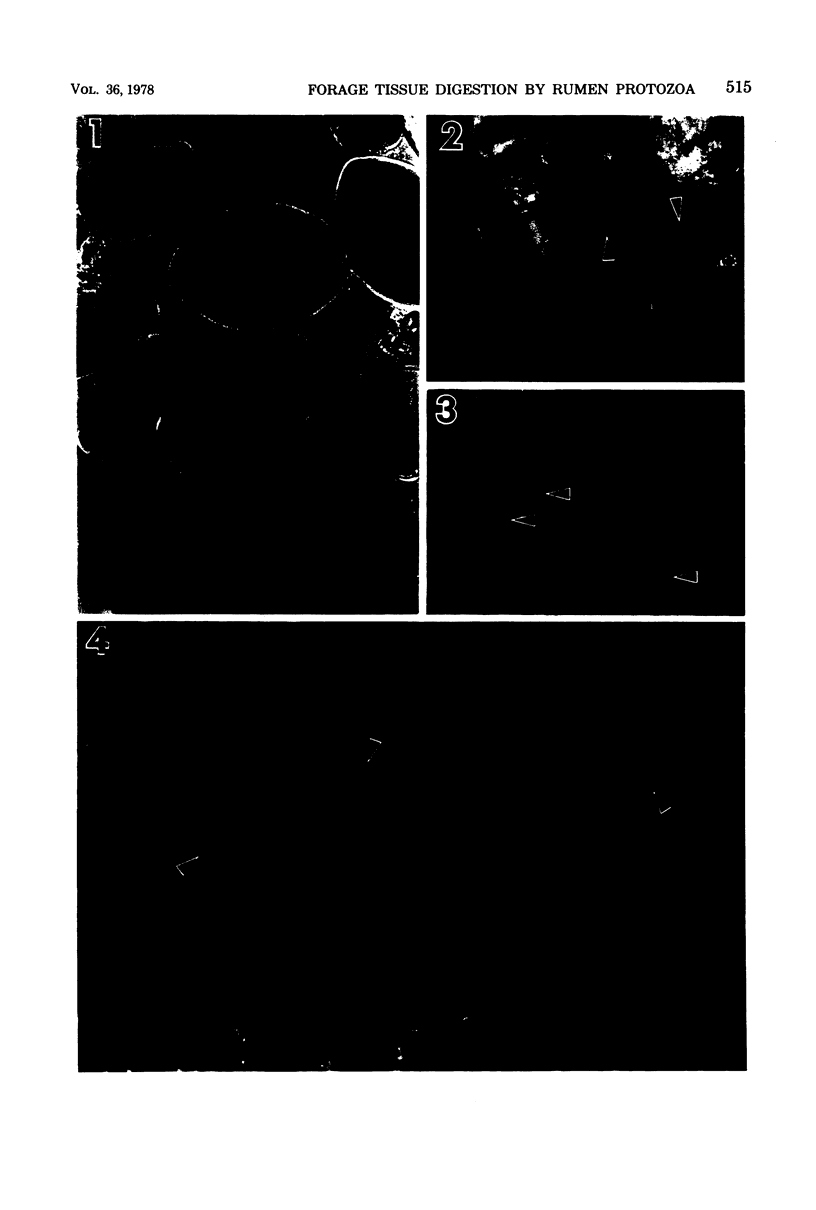

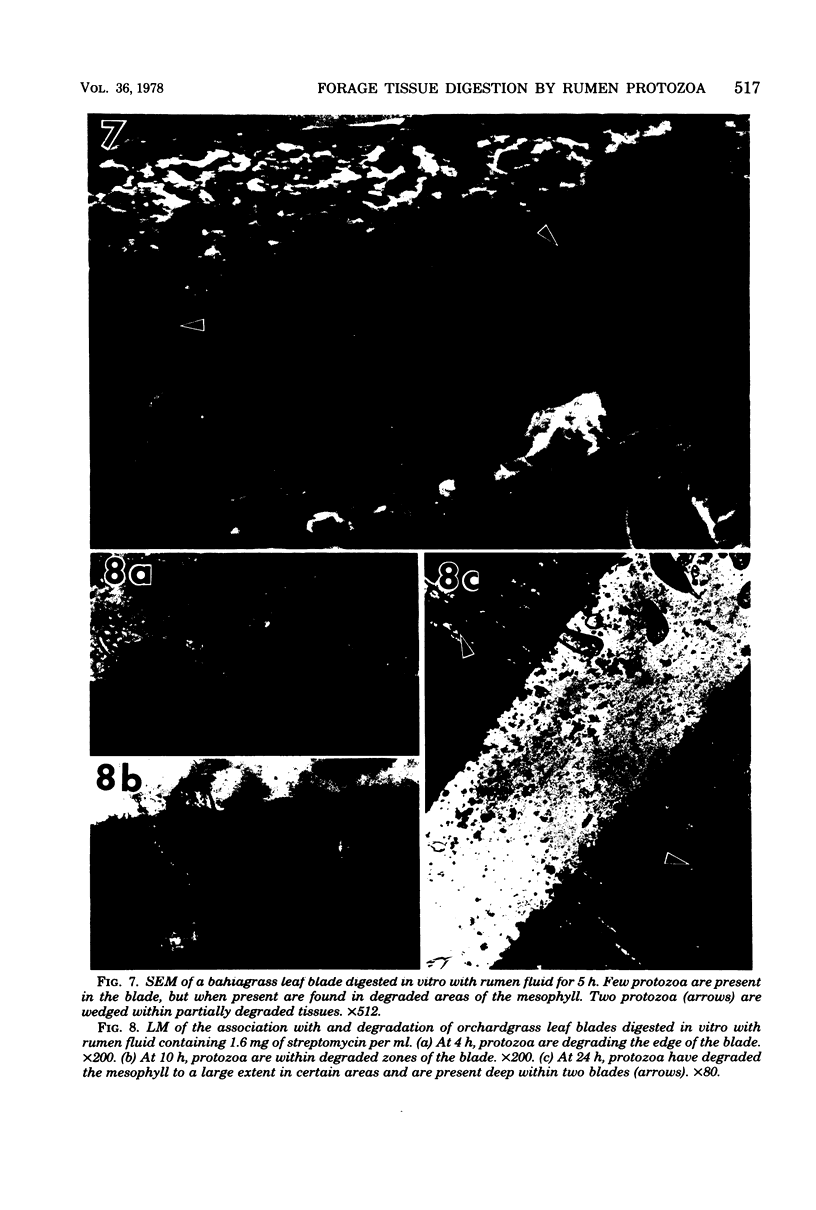
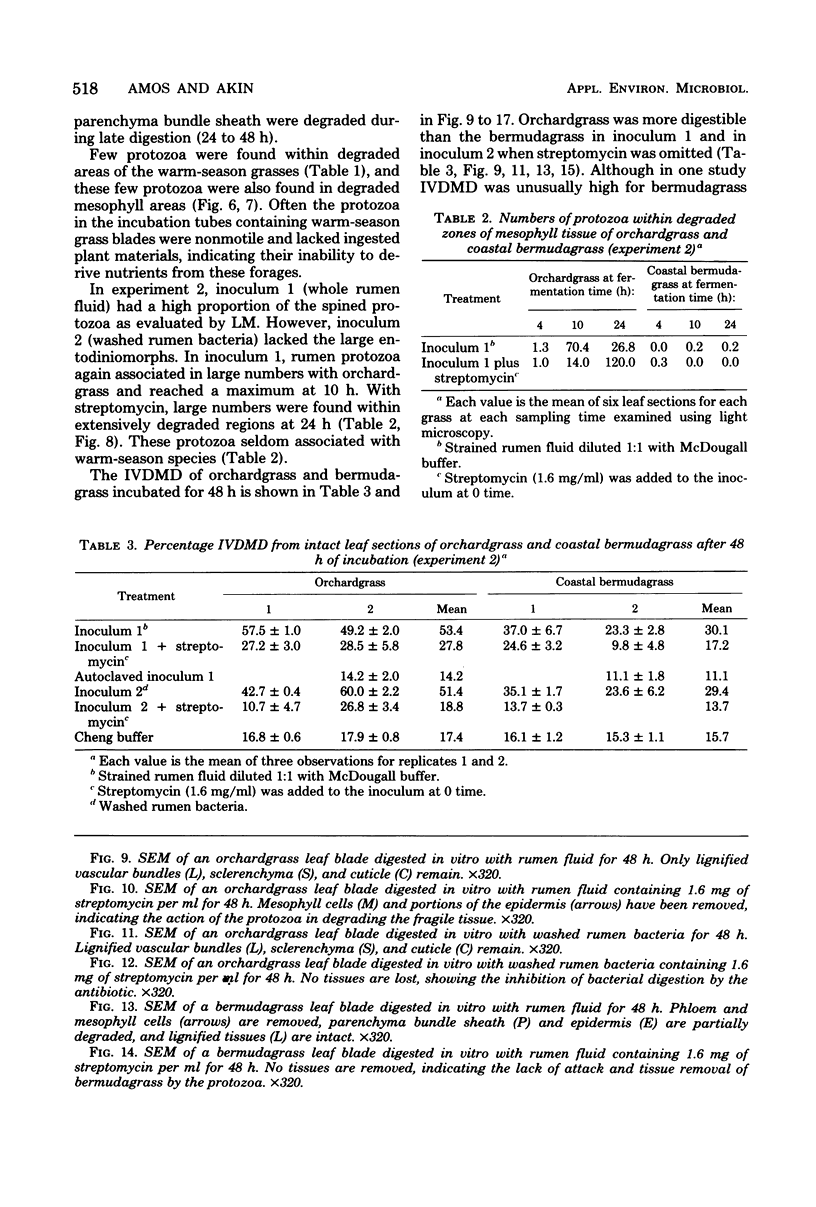
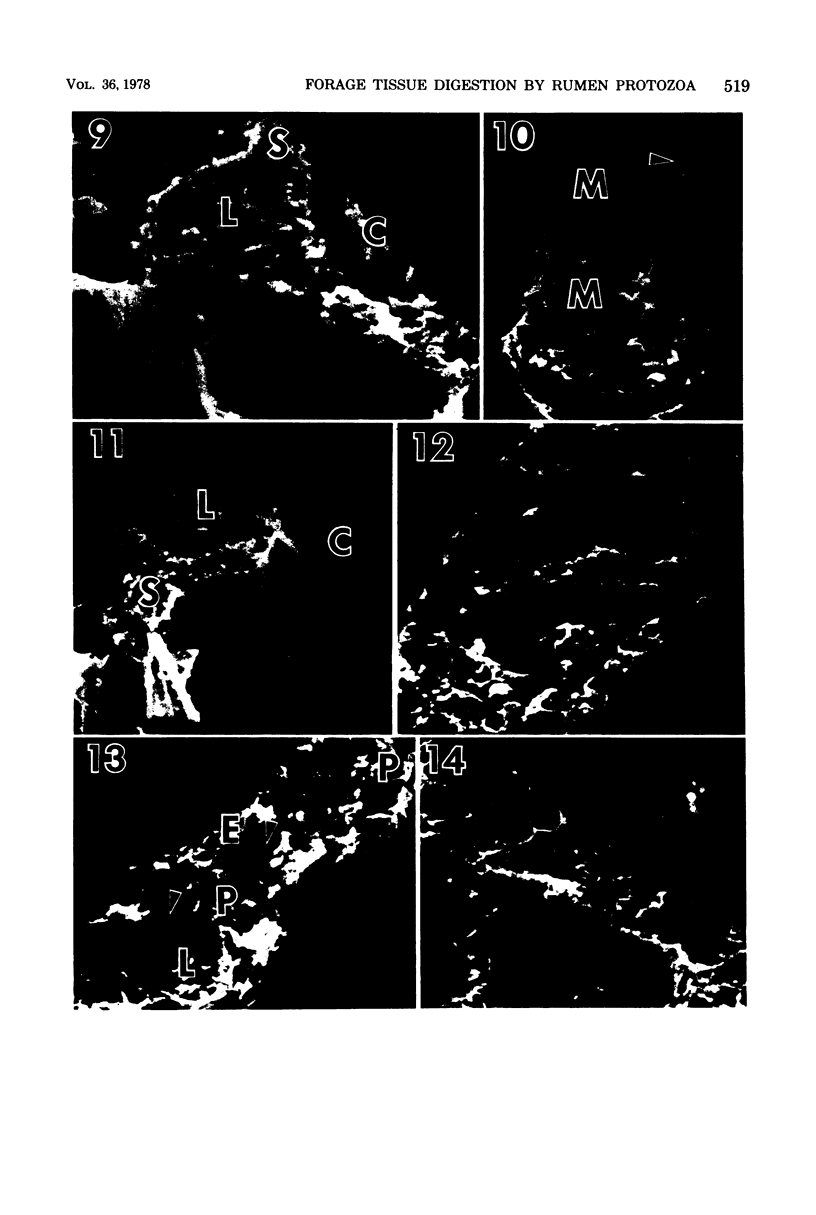
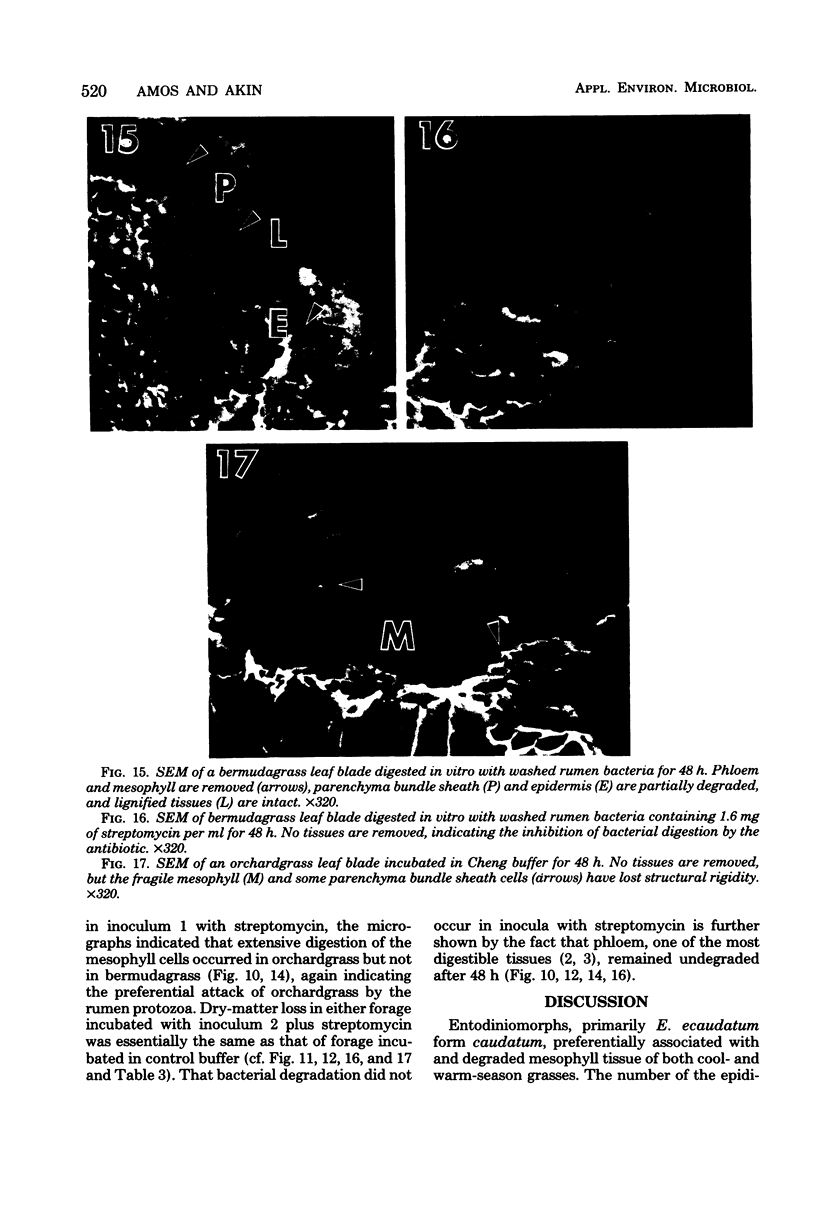

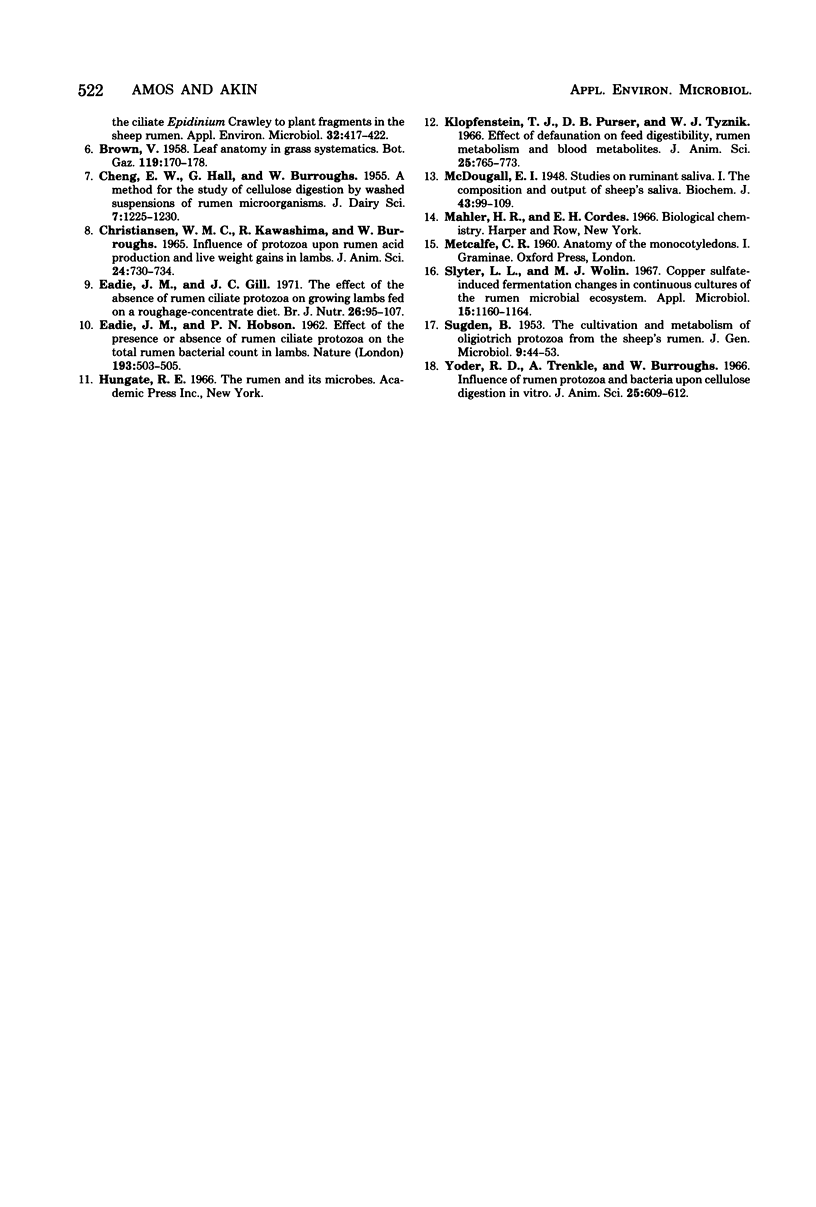
Images in this article
Selected References
These references are in PubMed. This may not be the complete list of references from this article.
- Akin D. E., Amos H. E. Rumen bacterial degradation of forage cell walls investigated by electron microscopy. Appl Microbiol. 1975 May;29(5):692–701. doi: 10.1128/am.29.5.692-701.1975. [DOI] [PMC free article] [PubMed] [Google Scholar]
- Akin D. E. Ultrastructure of rumen bacterial attachment to forage cell walls. Appl Environ Microbiol. 1976 Apr;31(4):562–568. doi: 10.1128/aem.31.4.562-568.1976. [DOI] [PMC free article] [PubMed] [Google Scholar]
- Bauchop T., Clarke R. T. Attachment of the ciliate Epidinium Crawley to plant fragments in the sheep rumen. Appl Environ Microbiol. 1976 Sep;32(3):417–422. doi: 10.1128/aem.32.3.417-422.1976. [DOI] [PMC free article] [PubMed] [Google Scholar]
- EADIE J. M., HOBSON P. N. Effect of the presence or absence of rumen ciliate protozoa on the total rumen bacterial count in lambs. Nature. 1962 Feb 3;193:503–505. doi: 10.1038/193503a0. [DOI] [PubMed] [Google Scholar]
- Klopfenstein T. J., Purser D. B., Tyznik W. J. Effects of defaunation on feed digestibility rumen metabolism and blood metabolites. J Anim Sci. 1966 Aug;25(3):765–773. doi: 10.2527/jas1966.253765x. [DOI] [PubMed] [Google Scholar]
- McDougall E. I. Studies on ruminant saliva. 1. The composition and output of sheep's saliva. Biochem J. 1948;43(1):99–109. [PMC free article] [PubMed] [Google Scholar]
- SUGDEN B. The cultivation and metabolism of oligotrich Protozoa from the sheep's rumen. J Gen Microbiol. 1953 Aug;9(1):44–53. doi: 10.1099/00221287-9-1-44. [DOI] [PubMed] [Google Scholar]
- Slyter L. L., Wolin M. J. Copper sulfate-induced fermentation changes in continuous cultures of the rumen microbial ecosystem. Appl Microbiol. 1967 Sep;15(5):1160–1164. doi: 10.1128/am.15.5.1160-1164.1967. [DOI] [PMC free article] [PubMed] [Google Scholar]
- Yoder R. D., Trenkle A., Burroughs W. Influence of rumen protozoa and bacteria upon cellulose digestion in vitro. J Anim Sci. 1966 Aug;25(3):609–612. doi: 10.2527/jas1966.253609x. [DOI] [PubMed] [Google Scholar]



